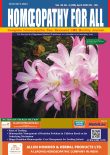The Current Status and Future of the Education Sector in Homoeopathy
Keywords:
globally, recognized, modality, particularlyAbstract
Homeopathy was founded 200 years ago by Dr. Samuel Hahnemann who gave direction to this branch of medicine with his famous concept “similia similibus curentur” (‘let like cure likes’). Homeopathy is based on three basic principles:
1. The rule of similia
2. Testing of medicament in healthy human being
3. The principle of homeopathic doses.
Homoeopathy, has evolved into a globally recognized modality, particularly in countries such as India, Germany, Brazil, and the UK. The education sector in homoeopathy has seen remarkable development over the last few decades, particularly with state-sanctioned institutional frameworks and integration into public healthcare systems. However, the field also faces substantial challenges, including issues of scientific validation, curriculum reform, global acceptance, and integration with mainstream medicine. This article provides a critical and detailed analysis of the current status of homoeopathic education and proposes strategic pathways for its future development.
Downloads
References
1. World Health Organization. (2013). Traditional Medicine Strategy 2014–2023. Geneva: WHO.
2. Ministry of AYUSH, Government of India. (2024). Annual Report 2023–24. New Delhi: Ministry of AYUSH.
3. Ernst, E. (2010). A systematic review of systematic reviews of homeopathy. British Journal of Clinical Pharmacology.
4. Vithoulkas, G. (2008). The Science of Homeopathy. International Academy of Classical Homeopathy.
5. Bellavite, P., & Signorini, A. (2002). The Emerging Science of Homeopathy. North Atlantic Books.




